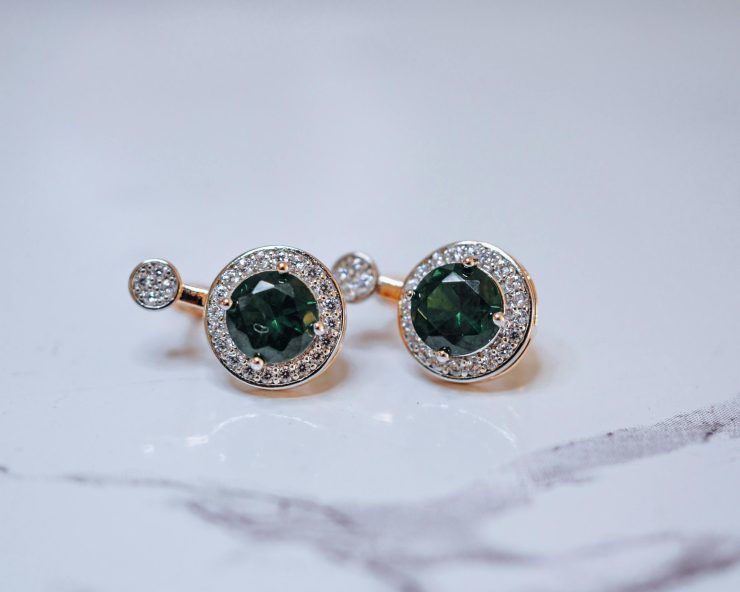Consignment is a method of selling goods in which the seller entrusts their item—in this case, a diamond—to a third party, often a jeweler or broker, who sells it on their behalf. Unlike direct sales, where ownership is immediately transferred upon transaction, consignment retains ownership with the seller until the diamond is sold. This distinction is fundamental because it shapes the legal and financial implications of the agreement. The consignment agent, typically an established retailer or specialist, markets and displays the diamond, using their industry contacts and resources to secure a buyer. For high-value assets such as diamonds, consignment can be a beneficial route, as it allows the seller to tap into a network of clients and expertise they may not personally have. However, this method also introduces risks, such as the potential for unsold inventory or lack of control over how the item is presented. Understanding how consignment works—and how it differs from outright selling or auctioning—is the first step for anyone considering this sales avenue for a valuable gemstone.

Advantages of Selling Diamonds on Consignment
Consignment offers several potential advantages to diamond sellers, particularly when dealing with stones of substantial quality or value. One of the most notable benefits is the potential for a higher sale price. Because consignment agents have established customer bases and know how to market high-end jewelry effectively, they can often secure better prices than individual sellers could on their own. Moreover, consignment sellers typically display items in physical showrooms, websites, or high-traffic auction platforms, increasing exposure. This level of visibility is hard to replicate without professional help. Additionally, some jewelers offer value-added services such as professional cleaning, certification, appraisals, and attractive displays—all of which can make a diamond more appealing to potential buyers. Importantly, consignment also allows for a hands-off approach. The seller does not have to manage advertising, customer inquiries, or negotiations. However, these advantages are contingent on choosing the right consignment partner and fully understanding the agreement’s terms. If well executed, consignment can strike a valuable balance between maximizing return and minimizing seller involvement.
Risks and Considerations Before Choosing Consignment
While consignment can be profitable, it is not without risks—and these must be weighed carefully before proceeding. One major risk is that the diamond may not sell quickly or at all. Market conditions, the stone’s characteristics (cut, clarity, carat, color), pricing expectations, and even the seller’s reputation all play a role in the speed of sale. Additionally, while the diamond is in the possession of the consignment agent, the seller relinquishes physical control, which raises concerns about loss, damage, or even misappropriation. It’s critical to ensure the consignment agreement includes robust protections, such as detailed inventory records, proof of insurance, and provisions for secure storage. Some sellers also experience frustration with pricing. Consignment agents may recommend lowering the price if the diamond does not sell within a certain timeframe, potentially pressuring the seller to accept less than originally desired. Furthermore, many agreements include clauses that allow the agent to retain the diamond for extended periods, limiting the seller’s ability to explore other sales channels. Understanding these potential pitfalls is key to avoiding disappointment or financial loss.
How to Choose a Trustworthy Consignment Partner
Selecting a reputable and experienced consignment partner is arguably the most critical part of the entire process. Not all consignment agents operate at the same level of professionalism or transparency, and the stakes are high when dealing with valuable items like diamonds. A good starting point is to research jewelers or brokers who specialize in fine jewelry and have a documented history of successful sales. Look for client testimonials, industry affiliations (such as membership in the Jewelers of America or the Better Business Bureau), and whether the business carries adequate insurance for consigned goods. It’s also important to verify that the agent offers clear, written consignment contracts that outline all responsibilities and expectations, including duration of the consignment, commission fees, pricing strategies, and insurance coverage. Reputable consignment partners will be transparent about how they plan to market the diamond, whether it will be listed online, shown to private clients, or placed in-store. Avoid agents who promise unrealistic sale prices or fail to provide a detailed consignment process. Trust and professionalism are non-negotiable when it comes to high-value transactions.
Key Elements of a Diamond Consignment Agreement
A well-structured consignment agreement protects both the seller and the agent and is essential for ensuring a smooth transaction. This document should clearly identify the diamond being consigned, including all relevant characteristics such as carat weight, cut, color, clarity, and any certification numbers (e.g., from GIA or AGS). It should specify the duration of the consignment period—typically ranging from 30 to 90 days or more—and detail what happens if the item does not sell within that time. Commission rates must be explicitly stated; most consignment agents take a percentage of the final sale price, often between 10% and 30%. The agreement should also address who covers ancillary costs such as appraisals, cleaning, or marketing. Crucially, insurance provisions must be included, with details about what type of coverage is in place should the diamond be lost, stolen, or damaged while in the agent’s possession. A clause outlining termination conditions—how and when either party can withdraw from the agreement—is also advisable. In short, the consignment agreement is the legal foundation of the arrangement, and it must be reviewed thoroughly before any commitment is made.

The Role of Documentation and Certification in Consignment Sales
One of the most overlooked yet critical aspects of selling a diamond on consignment is proper documentation. A diamond without verified credentials is significantly harder to sell, especially at premium prices. This is why sellers are strongly advised to provide certification from reputable gemological laboratories such as the Gemological Institute of America (GIA), the American Gem Society (AGS), or the International Gemological Institute (IGI). These documents not only confirm the diamond’s authenticity but also detail its precise characteristics, which helps buyers make informed decisions and gives them confidence in the transaction. Alongside certification, an independent appraisal is often recommended—preferably from a credentialed appraiser who is not affiliated with the consignment agent. This appraisal can serve as an additional layer of validation and helps ensure the asking price is realistic and competitive in the current market. Moreover, sellers should maintain a complete record of communication, contracts, and any logistical steps taken during the consignment process. This includes photographs of the diamond, proof of insurance, shipping receipts (if the item is transported), and signed acknowledgments from the agent receiving the stone. Proper documentation not only strengthens a seller’s position in case of disputes but also projects professionalism to potential buyers and consignment partners alike.
Understanding Commission Structures and Hidden Costs
Commission rates are a central feature of consignment agreements, and understanding how they work is essential to calculating your potential net profit. Generally, consignment agents charge a commission percentage based on the final sale price of the diamond. Rates can vary widely—10% to 30% is typical, though some luxury retailers may command more depending on the services they provide or the exclusivity of their clientele. It’s important to clarify whether the commission is deducted before or after certain expenses, such as taxes, appraisal costs, or advertising fees. Some consignment agents also pass along marketing expenses, such as professional photography, listing fees for online marketplaces, or premium display costs in brick-and-mortar locations. These additional charges may not be immediately apparent unless spelled out in the agreement, so sellers should ask for a full breakdown before proceeding. Furthermore, sellers should consider that the consignment agent has a financial incentive to price the item competitively to secure a quick sale and earn their commission—sometimes at odds with a seller’s desire to hold out for a higher price. Clear communication and mutual understanding of pricing strategies are essential to ensure both parties are working toward the same goals without incurring unexpected costs.
Timeframes, Patience, and Market Realities
Selling a diamond on consignment is not typically a quick process, and sellers should set their expectations accordingly. Depending on market demand, price point, the uniqueness of the diamond, and the reach of the consignment agent’s network, a sale can take anywhere from a few weeks to several months. In some cases, it may not sell at all during the initial consignment period, prompting the need for reevaluation of pricing or marketing strategies. It’s also important to note that luxury items such as diamonds are often considered discretionary purchases, meaning their sales are more susceptible to fluctuations in economic conditions. Market saturation, seasonal trends, and broader consumer confidence can all influence buyer behavior. For example, demand for engagement rings tends to increase in the fourth quarter of the year, whereas resale prices may drop during slower retail months. Patience is essential, but it should be informed patience—sellers need to stay in contact with the agent, request periodic updates on interest levels, and be open to adjustments. Rigid pricing or inflexible terms may result in missed opportunities. Viewing consignment as a mid- to long-term strategy, rather than a quick cash-out, will better position sellers to benefit from the process.
Alternatives to Consignment: When It May Not Be the Best Fit
Although consignment has many merits, it is not the ideal choice for every seller or situation. Sellers seeking immediate liquidity, for example, may find consignment too slow. In such cases, selling directly to a jeweler, diamond wholesaler, or even a pawnbroker may offer a faster—but typically lower—payout. Online diamond-buying platforms and auction houses provide other alternatives. These methods can reduce waiting times, but they come with trade-offs in terms of final sale price and seller control. Auctions, for instance, introduce an element of unpredictability and typically involve both seller and buyer premiums. Additionally, sellers who lack trust in third-party agents or are concerned about handing over a valuable item to a stranger may prefer more direct transactions. In some cases, private sales facilitated by escrow services can offer a middle ground. Understanding your individual priorities—speed, price, convenience, risk tolerance—will help determine whether consignment is the best route. While consignment is often associated with maximizing value, it requires a degree of patience, risk management, and trust that may not suit everyone. It’s important to evaluate all available options before committing to ensure the chosen path aligns with your financial goals and comfort level.
Final Thoughts: Is Consignment Right for You?
Choosing to sell a diamond through consignment is a nuanced decision that hinges on a variety of personal and market-related factors. For sellers who prioritize receiving top dollar for their gemstone and are willing to wait for the right buyer, consignment can be a highly effective method. It allows access to expert marketing, professional presentation, and a broader pool of qualified buyers. However, this method demands careful planning, thorough vetting of consignment partners, and a clear understanding of the terms and conditions involved. The potential for delays, risks associated with relinquishing possession, and commission costs must all be carefully weighed against the potential for higher returns. Ultimately, success in diamond consignment comes down to choosing the right partner, staying informed throughout the process, and maintaining realistic expectations. By understanding the intricacies of how consignment works—and by actively managing your role in the process—you can navigate this method with greater confidence and maximize the value of your precious asset.